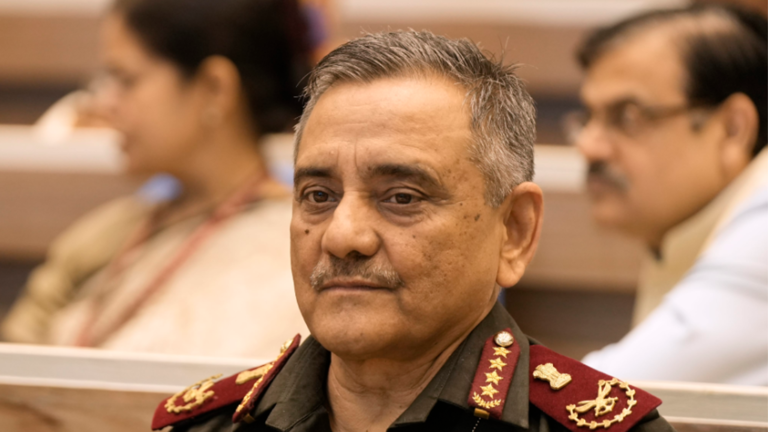India’s Top Defence Official Breaks Silence on Air Combat Claims
India’s Chief of Defence Staff (CDS) has firmly refuted Pakistan’s recent claim that its forces shot down six Indian fighter jets during the escalation that followed Operation Sindoor. Speaking to the press, the CDS clarified that while India did face “initial losses” during the first phase of the skirmish, those setbacks were quickly addressed and did not hamper the Indian military’s ability to strike back effectively. The statement comes amid ongoing information warfare between the two nations, with Pakistan seeking to project a major tactical victory, while India maintains that it delivered a far more decisive and calculated response.
This official clarification from the highest military authority in India aims to counter Pakistan’s narrative and reassert the operational resilience and superiority of the Indian Armed Forces in high-stakes combat situations. It also underscores India’s transparency regarding battlefield realities and highlights the country’s capacity to bounce back swiftly in the face of tactical surprises.
Pakistan’s Claim vs India’s Official Version
Following the conclusion of Operation Sindoor, Pakistan’s Inter-Services Public Relations (ISPR) released a statement claiming that Pakistani Air Force (PAF) successfully downed six Indian Air Force (IAF) fighter jets, citing it as a moment of national triumph. However, India did not issue an immediate official rebuttal—until now. The Chief of Defence Staff has unequivocally denied these claims. According to the CDS, India did suffer some initial losses due to unexpected tactics deployed by Pakistan, but the number of downed jets was grossly exaggerated. “We had a setback in the early hours of the engagement, but it was tactical, not strategic,” said the CDS. “We adapted, reinforced, and retaliated with overwhelming force. The balance shifted in our favor quickly.”
I’d hate to say this, but with all due respect, the CDS comes across as a bit too innocently honest at the wrong time. His clarification “it’s absolutely false” will not get much attention, but the “tactical mistakes” is bound to be exploited, midst of aggressive PR narratives. pic.twitter.com/d9mOfMIruQ
— The Hawk Eye (@thehawkeyex) June 1, 2025
The CDS further asserted that India’s precision airstrikes following the initial exchange significantly degraded Pakistan’s key forward airbases and radar installations. Independent defense analysts have also noted inconsistencies in Pakistan’s claims, citing a lack of verifiable wreckage or credible third-party verification to support the six-jet kill count. This clash of narratives is not just about numbers—it’s about strategic perception. By refuting inflated kill counts, India is sending a clear message to both domestic and international audiences that its military remains not only capable but also transparent and grounded in facts.
India’s Military Resilience and Rapid Tactical Recovery
A key takeaway from the CDS’s remarks is the Indian Armed Forces’ ability to recover and retaliate decisively. The admission of “initial losses” may seem like a vulnerability, but in reality, it demonstrates military maturity. Transparency in acknowledging setbacks while emphasizing rapid operational turnaround builds institutional credibility and trust.
According to the CDS, within hours of the initial losses, Indian squadrons reoriented their mission strategy, plugged gaps in radar surveillance, and launched counteroffensive operations that “crippled Pakistan’s ability to sustain any escalation.” Sources suggest that India’s air retaliation targeted key military infrastructure and logistics hubs, ensuring long-term deterrence.
Experts in strategic affairs point out that this readiness and agility are the results of years of modernization in command control systems, joint warfare doctrine, and simulation-based training. “What could have been a prolonged vulnerability was turned into a quick advantage,” one military commentator noted. Moreover, India’s handling of this incident has also been noted internationally, with key allies praising the professionalism and restraint shown by Indian forces despite provocation. This boosts India’s global defence reputation and reinforces its image as a responsible regional power.
By refuting Pakistan’s exaggerated claims and openly admitting to and recovering from initial setbacks, India’s Chief of Defence Staff has provided a credible and composed account of the post-Operation Sindoor aerial engagements. This transparency not only counters misinformation but also reinforces India’s strategic messaging: the Armed Forces are resilient, adaptive, and capable of dominating any escalation. In a region where perception shapes policy and propaganda often overshadows fact, such authoritative clarity is vital—not just for national morale, but for maintaining strategic deterrence in South Asia.





















